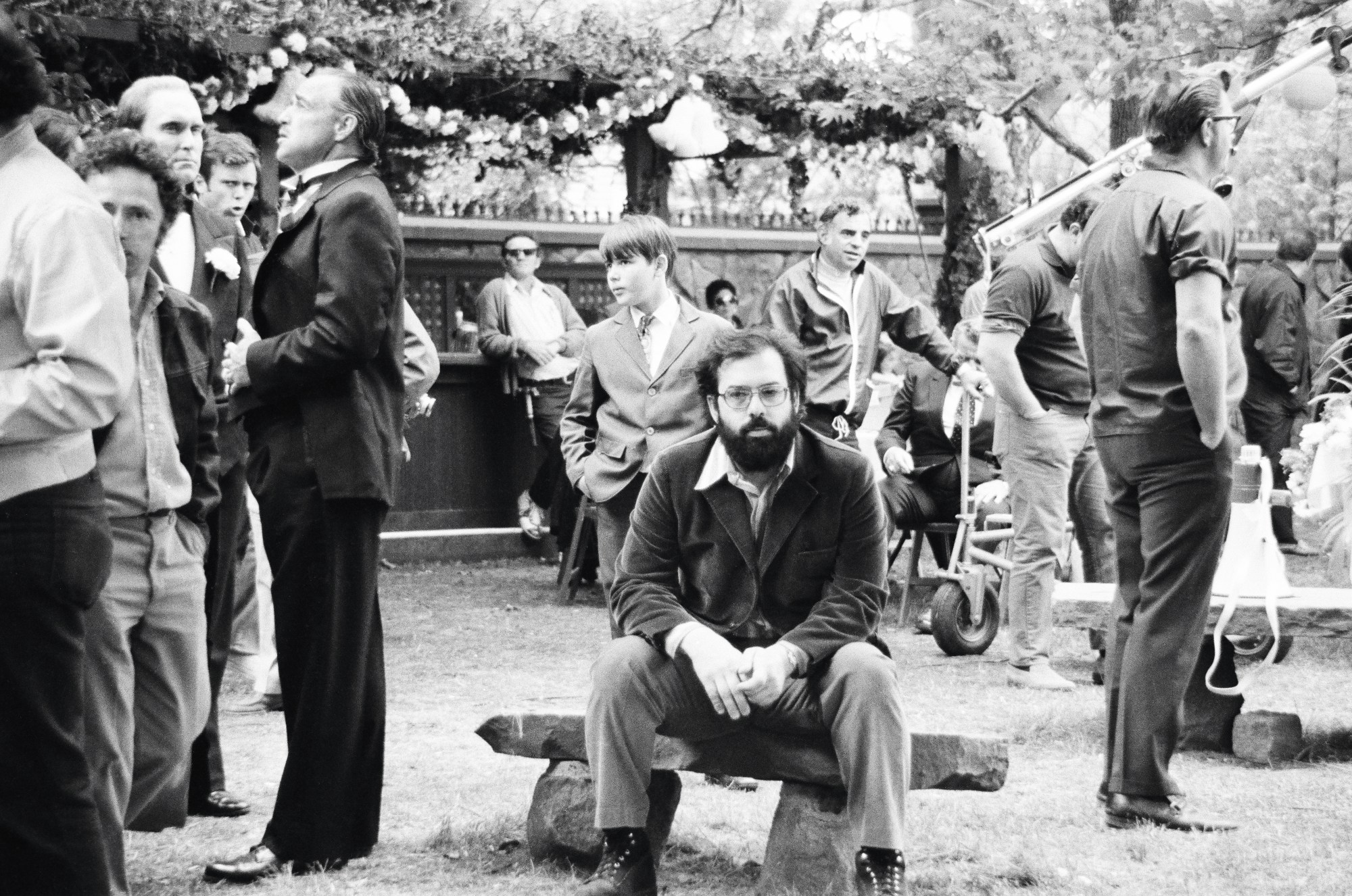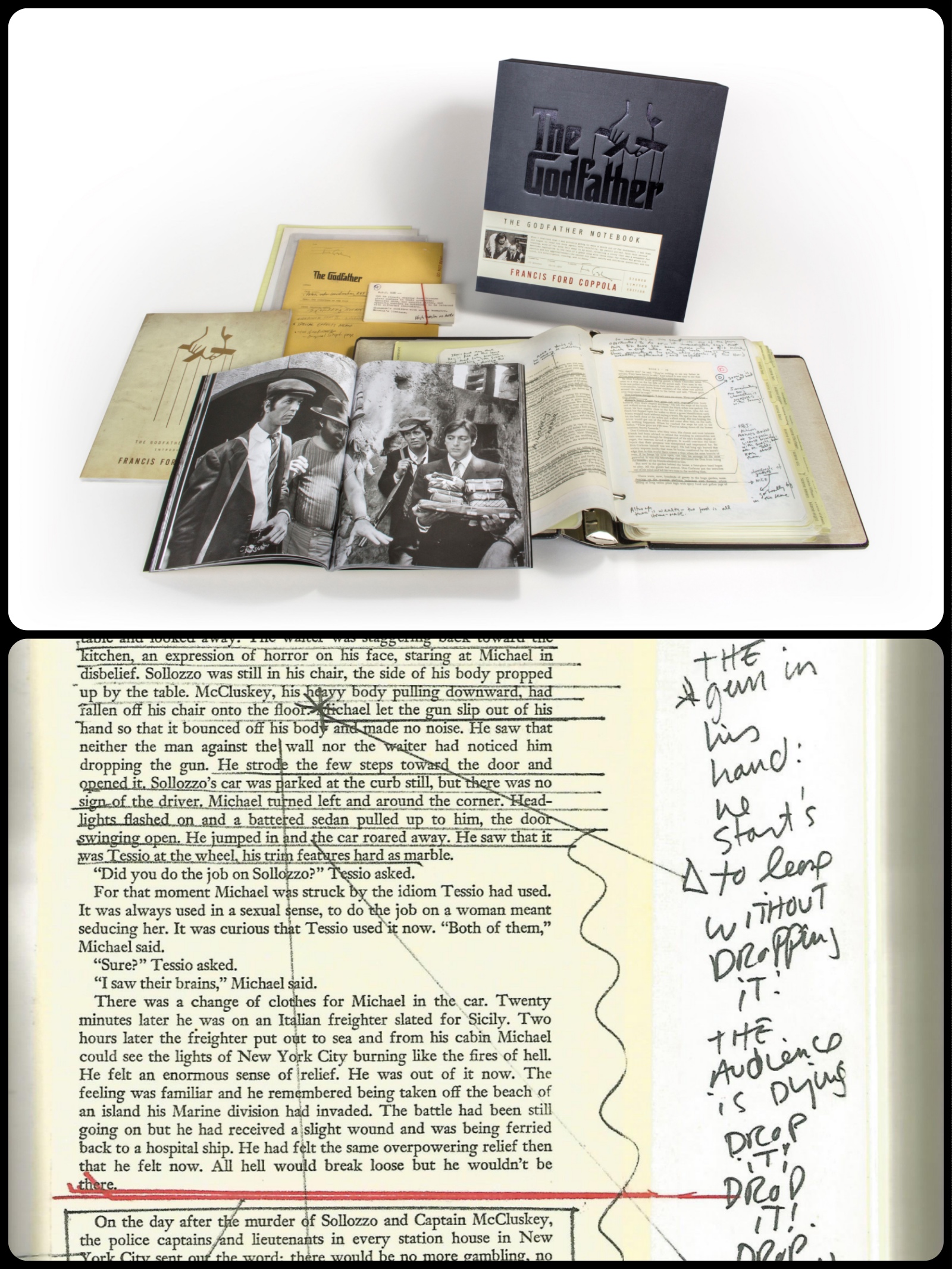
- Industry
How Words Become Images: Inside The Mind of Francis Ford Coppola With The Godfather Notebook
The Caffe Trieste still stands in San Francisco’s North Beach neighborhood. There in 1970, Francis Ford Coppola, 31 at the time, spent many an afternoon typing away on his yellow Olivetti Lettera 32, working on what he calls a “prompt book”: the voluminous and extensively detailed blueprint that would serve as the basis of his screenplay for The Godfather. Now, 46 years later, it’s finally possible, for the very first time, to read the original and complete Notebook, just published by Regan Arts in a facsimile edition. The book offers a unique and most fascinating insight into the writing, preparation and intense creative process of one of the greatest movies of all time.
In a lengthy detailed introduction, Coppola takes us back in time and recounts how he finally came to accept Paramount’s assignment to direct The Godfather, and why it was an offer he could not refuse. At first he did not like the eponymous bestseller written by Mario Puzo, but he remembered being intrigued by the puppeteer’s hand on the book cover and the power that, to him, such logo implied. After initially turning it down, he finally agreed to reconsider, urged by his friend and protégé George Lucas. Zoetrope the San Francisco-based independent company they had just founded was deep in the red. One other pressing reason, he admits, was that “I had a wife and two kids and a third on the way at the time.” So Coppola read the book again, this time carefully and started to see its potential.
The idea of compiling the prompt book came to him from his theater arts college days as a method to dissect a play. “So I took Mario’s novel, Coppola explains, broke it out of its binding, and set upon this task of cutting the pages wit a razor blade and mounting them on cutouts of white paper so you could see both sides.” And plenty of space for annotations in what he describes as “the bridge between the book and the film,”
His approach was to divide the novel in to five acts, and then subdividing those into fifty sections, or scenes, each separated in the loose-leaf binder by a numbered tab. He broke down each potential scene into five components. “Synopsis”, “The Times”, “Imagery and Tone”, “The Core” and “Pitfalls.”
Flipping through the 784 pages of the replica edition is simply captivating. The majority of the pages are underlined and copiously annotated with informative remarks and comments in Coppola’s energetic and impulsive handwriting. It makes for a mesmerizing appreciation of the filmmaker’s process, state of mind and visionary skills. “The more pens I was using and the more ruler lines and squiggly lines that there were in a section sort of implied the excitement of the book was higher and higher [for me], so that just the sheer amount of ink on the page would tell me later on : This is one of the most important scenes…”

The deluxe edition of The Godfather Notebook, and some of Coppola's notes on Mario Puzo's original text.
regan arts
Case in point, the famous scene where movie producer Jack Wolz wakes up to find the bloodied severed head of his prized race horse Khartoum on his bed…In the pitfalls section of aspects to absolutely avoid Coppola writes: “This is not horrifying enough. If the audience doesn’t jump out of their seat on this one, you have failed. Too much in the Corman Horror film tradition would also be a mistake. One must find the perfect balance of Horror without losing the thread of the oval film. Deliver it and get out.” As anyone who has seen the film remembers, he brilliantly managed to do just that.
And what about “Sequence 46: The Don dies in his garden”? In the book Vito whispers “Life is so beautiful,” while expiring in Michael’s arms. In the margin of his notebook, Coppola has written its Italian translation: La vita è meravigliosa” and added: Nice. In the movie of course, no such words were uttered by Marlon Brando while falling among his tomato plants, only witnessed by his grandson. “The truth is, I think I made the notebook out of profound fear, Coppola concludes in the introduction. It is important to understand that at the root of it all, I was terrified.”After completing it, he wrote the 155-page screenplay which he delivered to the studio on August 10th, 1970. Filming would start in March 1971 with principal photography ending on August 7th..
The Notebook as his Bible and anchor, as he writes, would never leave his side as he schlepped it around from location to location in a big brown leather satchel. It was as Coppola insists “a kind of multi-layered road map for me to direct the film and the script was really an unnecessary document for me. I could have made the film just from the notebook.” But looking back, he also alludes to the stressful times of the “downs and downs” he had to endure. Confessing in a recent interview with the New York Times, that the “memory of the Godfather brings great unhappiness (…) and usually a reaction of panic and nausea.” He could not even remember when he last saw the film…
Still, after reading this unique Notebook and its many never before heard anecdotes and details, (how notes would come from his own Italian-American heritage, the fact the iconic “Make him an offer he can’t refuse, came from his own mother…) one will be able to appreciate the film from a whole new perspective. The Godfather was released in the US on March 14, 1972. It went on to win five Golden Globes the following year. For Best Drama, Best Actor (Marlon Brando), Best Director, Best Screenplay and Best Original Score (Nino Rota). And to become an enduring classic.
THE GODFATHER NOTEBOOK
By Francis Ford Coppola
Regan Arts
$50.00/784 pages
& Signed Deluxe Edition with a replica of the 3-ring binder complete with signed sheet by Francis Ford Coppola
$500/ 720pages

